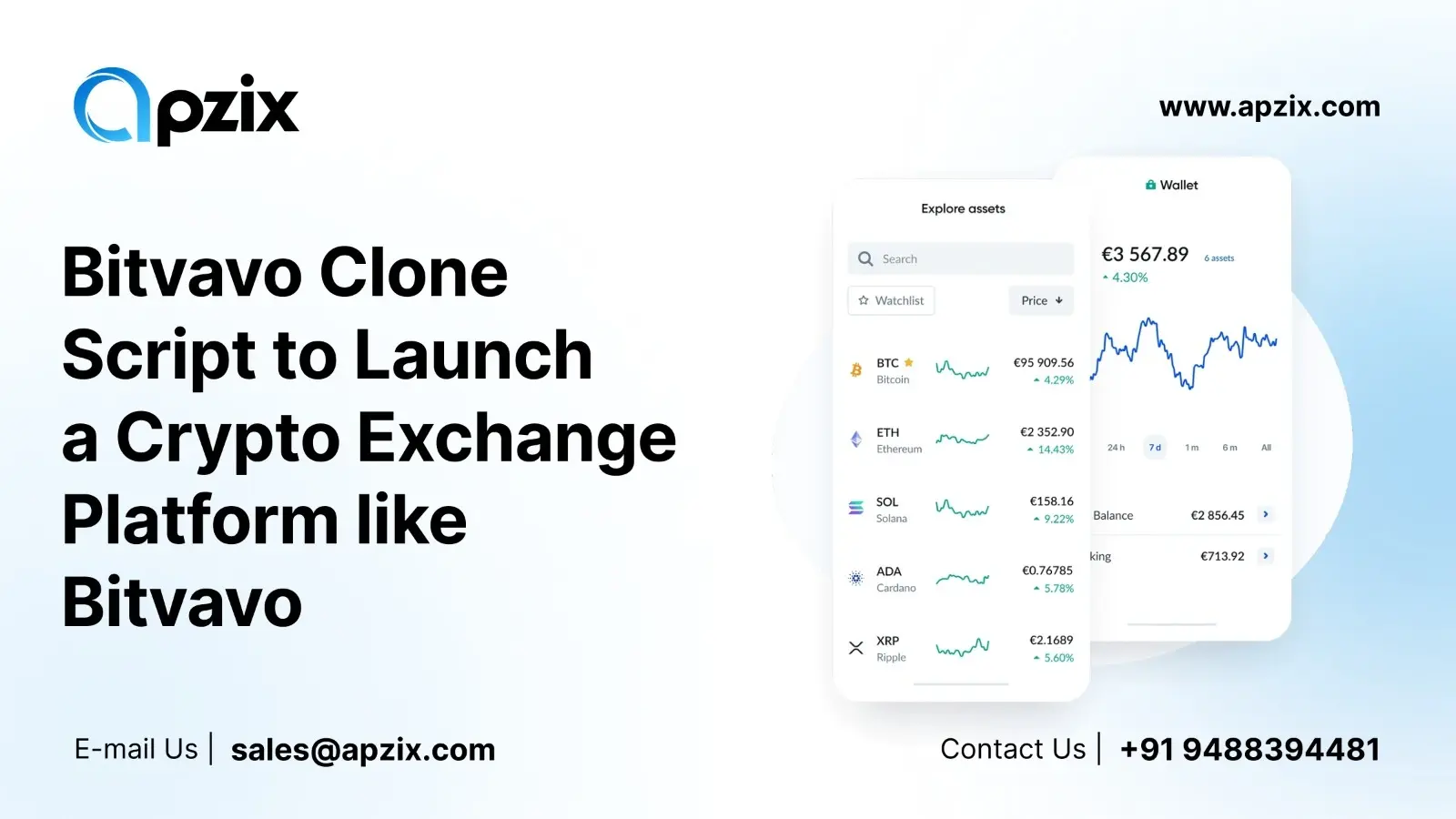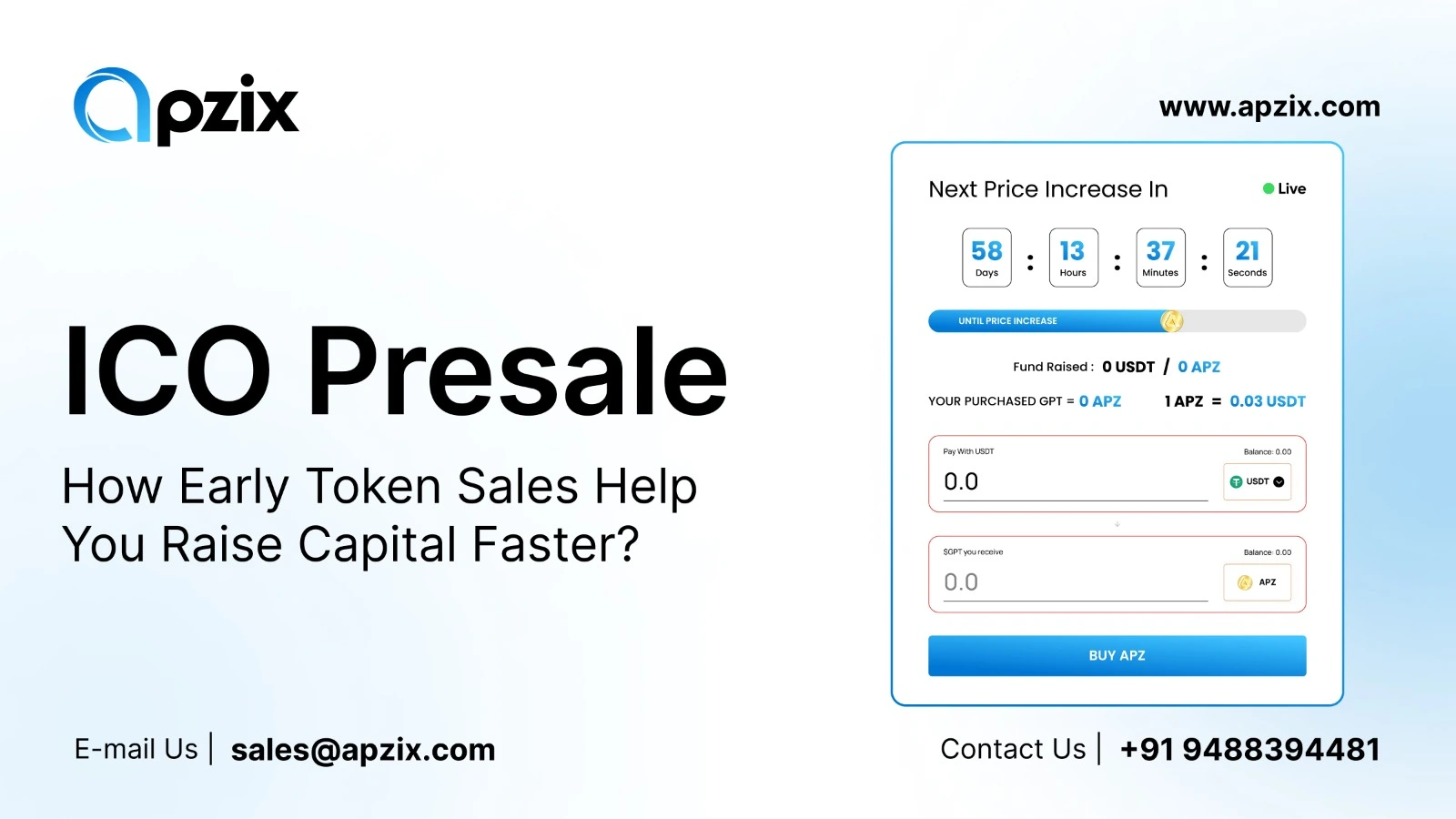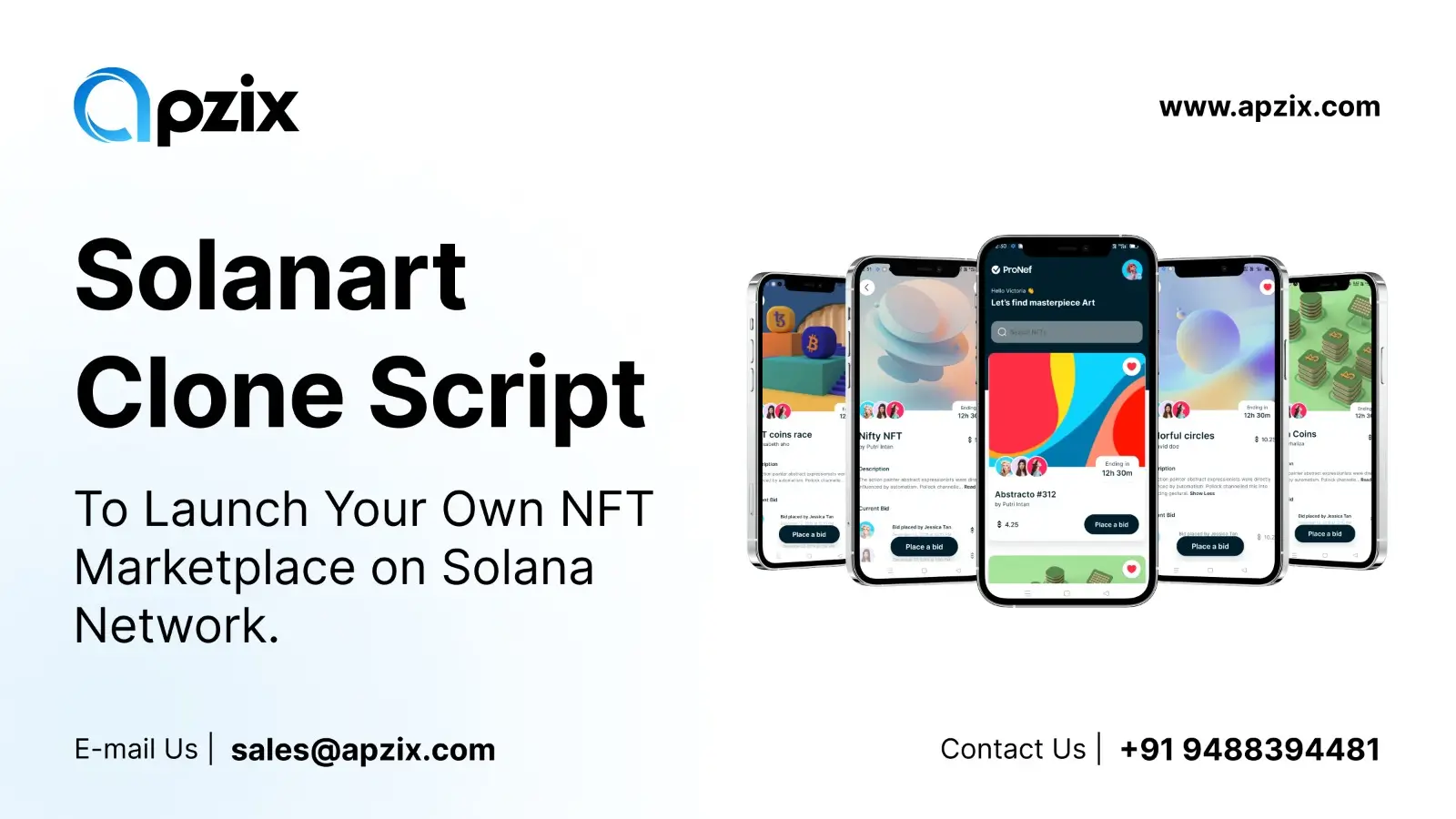
What usually stands out when you think of a successful cryptocurrency exchange? A user-friendly design? A massive number of traders? Maybe even viral marketing or an impressive coin listing?
While those are important, they’re not the only things holding the platform number one.
Behind every top-performing crypto exchange is something far less visible but far more powerful its architecture. This unseen framework plays a big role in how your platform handles traffic, deals with issues, and protects users.
Let’s explore what crypto exchange architecture is, why it truly matters, and what parts help form a stable, trustworthy trading platform.
What Is Cryptocurrency Exchange Architecture?
In simple terms, crypto exchange architecture is the technical layout that supports your exchange. It includes all the parts like trading engines, wallets, security systems, and dashboards, and how they work together.
Think of it like the plan behind a skyscraper. Without it, even the nicest-looking building might fall apart in a storm. In the crypto world, that “storm” could be a hacking attempt, a sudden wave of new users, or system overload.
Why Focus on Architecture When Building an Exchange?
If you're launching a new crypto exchange, you’re probably already dealing with challenges: tight budgets, strict regulations, and serious competition. Add technical hiccups like outages or slow transactions, and you could easily lose your user base before even gaining traction.
That’s why building a strong structure is one of the smartest moves you can make. Here’s what a reliable system helps with:
Handling Growth: Your platform can easily adapt as more users join and trades increase.
Fast Transactions: A responsive backend allows for quick order processing.
User Protection: It keeps user data and funds safe from threats.
Meeting Rules: It makes it easier to meet legal standards like KYC/AML.
Recovery Support: It helps your system bounce back quickly from failures or attacks.
Main Parts of a Crypto Exchange System
A well-structured cryptocurrency exchange isn’t built overnight. It’s the result of carefully combining various moving parts—each serving a purpose, from trade execution to user protection. If you’re planning to launch your own exchange, here’s a closer look at the essential components you’ll need to build a solid and trustworthy trading platform.
1. Trading Engine
This is the brain behind your exchange. It matches buy and sell orders, processes trades, and handles price calculations. The better your matching algorithm, the better your users’ trading experience.
A sluggish or error-filled engine can lead to wrong trades or missed opportunities, which drives people away. Fast and accurate trading is a must.
2. Wallet Integration
Every user needs a place to store their digital assets. Your exchange should support both:
Custodial wallets – where the exchange holds the private keys
Non-custodial wallets – where users manage their own keys and assets
To avoid security risks, your system should use tools like multi-signature wallets, offline storage (cold wallets), and regular monitoring to reduce the chance of unauthorized access.
3. User Dashboard Design
The front-end of your platform is where traders interact. Make it clear, easy to use, and responsive. Key features include:
Search bar for finding tokens quickly
Filter tools for sorting by token, price, or blockchain
Customizable layouts so users can adjust their workspace
Live charts and pricing data
Multiple trading types like limit, market, or margin trades
Customer support options right from the dashboard
When your platform is easy to use and informative, people will stick around.
4. Admin Panel
While users see the interface, you need a strong back office to run things efficiently. The admin panel should include:
User management tools for reviewing activity and accounts
Analytics to track revenue, transactions, and performance
Security alerts for suspicious behavior
KYC/AML monitoring for identity checks and fraud prevention
Content tools for updating banners, announcements, and guides
Having complete control from one place helps you manage daily tasks and long-term goals effectively.
Security Features That Build Trust
No matter how visually impressive or user-friendly your crypto exchange is, none of it matters if user assets aren't safe. In the world of digital finance, security equals trust—and without trust, users will take their business elsewhere.
Here’s a breakdown of essential security features that every crypto exchange should implement to protect both the platform and its users.
Multi-signature Support
This feature requires multiple private keys to approve transactions. It helps reduce single-point failures and misuse.
DDoS Defense
This blocks fake traffic from crashing your platform during sudden spikes, keeping your system accessible.
SSL Encryption
This encrypts data as it moves between the user’s browser and your servers, making it harder to intercept.
Data Protection
Even if someone accesses your system, encrypted data will be unreadable without the right key.
Offline Storage
Keep most user assets in cold wallets—this limits exposure to online threats.
Security should be present in every part of your setup, from login procedures to trade processing.
Various Types of Cryptocurrency Exchange Architecture
When building a crypto exchange, the architecture you choose forms the foundation of how the platform operates, scales, and handles user activity. Each architecture type supports different business models, trading features, and security requirements. Understanding these types helps startups and developers create the right structure for their platform goals.
Here’s a detailed look at the major types of cryptocurrency exchange architecture and how they shape the platform’s structure and function.
1. Centralized Exchange (CEX) Architecture
Centralized exchanges are managed by a single authority or company. These platforms are popular due to their structured layout, quick transaction speeds, and liquidity support.
Key Components:
Central database for storing user credentials and transaction data
Internal matching engine for buy/sell orders
Custodial wallet systems (platform holds user funds)
Admin dashboard for KYC/AML checks and operational control
Advantages:
Simple navigation for new users
Fast trade execution
Strong liquidity through internal reserves or market makers
Challenges:
Higher risk if the central system is compromised
More regulatory compliance required
Examples: Binance, Coinbase, Kraken
2. Decentralized Exchange (DEX) Architecture
DEXs function without a central authority. Trades are conducted directly between users through smart contracts on blockchain networks.
Core Elements:
Smart contracts to handle trades and operations
Liquidity pools instead of a centralized order book
Integration with non-custodial wallets
On-chain validation of transactions
Advantages:
Users keep full control over their funds
No need for third-party intermediaries
More resistant to censorship
Limitations:
Slower transaction speeds
Lower liquidity for niche tokens
Fewer support tools
Examples: Uniswap, PancakeSwap, SushiSwap
3. Hybrid Exchange Architecture
Hybrid exchanges merge elements of centralized and decentralized platforms. They aim to provide the functionality of traditional platforms with added privacy and control.
Key Features:
Off-chain order matching, with on-chain finalization
Wallet options: custodial and non-custodial
Use of both liquidity pools and centralized reserves
Enhanced safety through smart contracts and multi-signature wallets
Strengths:
Better balance between performance and decentralization
Broader appeal to users with different priorities
Offers compliance tools while reducing risks of centralization
Examples: Nash, Qurrex
4. Peer-to-Peer (P2P) Exchange Architecture
P2P exchanges connect buyers and sellers directly. Users define their own trade terms, and the platform assists with escrow and dispute handling.
Structure Includes:
Direct listing of offers
Escrow module to secure funds during trades
Dispute resolution tools
Communication channel between users
Advantages:
Greater flexibility for users
Supports fiat and alternative payment methods
Useful in regions with limited banking access
Drawbacks:
Transactions can be slower
Risk of scams if proper moderation is lacking
Examples: LocalBitcoins, Paxful
5. White-Label Exchange Architecture
White-label architecture involves ready-made exchange solutions that can be customized for branding and deployment. This model suits businesses looking for a faster launch.
Key Features:
Pre-built core modules (trading engine, wallet, admin panel)
Design and feature customization options
Integration support with payment processors and blockchain networks
Optional features like staking, margin trading, or token listings
Advantages:
Speeds up time-to-market
Cost-effective for startups
Ongoing technical support often available
Considerations:
Less flexibility for complex custom features
Must choose a reputable vendor to avoid dependency risks
Best For: Startups and businesses entering the crypto market quickly
6. Cloud-Based Exchange Architecture
This model leverages cloud infrastructure to manage user data, trading modules, and system performance. It focuses on scalability, especially during high user activity.
Components:
Hosted on platforms like AWS, Azure, or Google Cloud
Microservices-based deployment
Load balancers for traffic distribution
Scalable storage and backup solutions
Benefits:
Reduces hardware costs
Easy to upgrade and scale
Built-in redundancy and disaster recovery features
Challenges:
Data protection must follow strict cloud security practices
Cloud dependency could raise privacy concerns for some users
Liquidity
Liquidity is what allows users to place trades quickly and at fair prices. Without it, your platform feels sluggish and unreliable.
Here’s how your setup can help support liquidity:
APIs: Let your platform connect to other exchanges, bots, and data sources.
Market Makers: Bring in partners who create buy/sell orders and reduce price gaps.
Liquidity Pools: These allow traders to tap into shared funds, which are common in decentralized exchanges.
When users don’t have to wait or worry about prices, they’ll trade more often.
Planning for Growth and Uptime
A crypto exchange isn’t just a project you launch once and forget. It’s a live, growing system that must support increasing users, larger transaction volumes, and evolving technology needs. That’s where scalable and resilient architecture becomes essential.
If your platform can’t handle a sudden spike in users or transaction volume, downtime and slow performance could damage your reputation and user trust. That’s why planning for uptime and growth from the beginning is critical.
Let’s break down the key infrastructure strategies that help you build a crypto exchange capable of scaling effectively while maintaining high availability.
Load Distribution: Spread traffic across multiple servers to avoid slowdowns.
Cloud Services: Use flexible hosting that can expand with your needs.
Data Backup: Store copies of your system and user data so you can recover quickly if something fails.
Final Thoughts
Launching a crypto exchange goes far beyond just building a website. It’s about constructing a reliable, scalable system that can handle real-time demands, secure user assets, and adapt to future challenges. Every part of your exchange—trading engine, wallet systems, security layers, and admin tools relies on a strong architectural foundation.
Architecture is more than structure, it’s the invisible strength behind your platform. It shapes how your exchange performs under pressure, how data is protected, how users interact with the system, and how well your platform grows over time.
Before pouring resources into marketing or design, invest in building a robust technical core. A poorly built exchange can fall apart under heavy usage or market volatility, damaging both user trust and brand reputation.
That’s why partnering with the right cryptocurrency exchange development company at ApziX, we build secure, high-performance crypto trading platforms from the ground up. From core architecture to deployment, our team builds each layer with long-term growth, stability, and protection in mind.
In the fast-paced world of crypto, a well-built structure isn’t just a bonus—it’s your foundation for success. Let ApziX help you launch a crypto exchange that’s not only functional today but future-ready for tomorrow.











